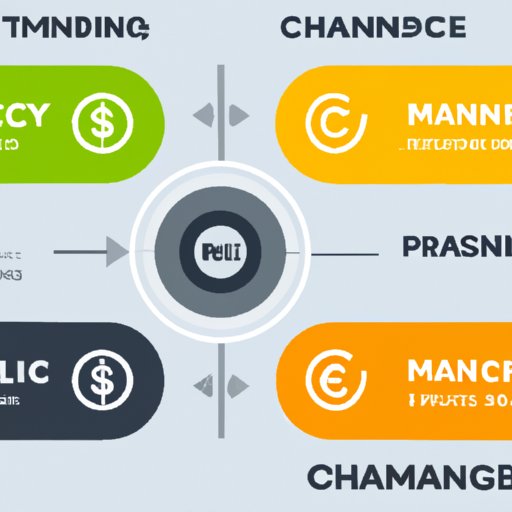Introduction
Channel marketing strategies are an essential part of any successful business. A channel marketing strategy is a plan for optimizing the distribution of a product or service from the producer to the consumer. The purpose of this article is to explore what channel marketing strategies are, their benefits, and how to craft a successful one for your business.

Overview of Channel Marketing Strategies: What They Are and How to Implement Them
Channel marketing strategies involve the selection and management of channels that will be used to deliver a product or service to customers. A channel is a route through which products and services are delivered to end-users. There are various types of channels, such as direct selling, indirect selling, online channels, and offline channels. Each type has its own unique benefits and drawbacks.
In order to implement an effective channel marketing strategy, businesses must identify their target market, choose the right channel mix, set appropriate pricing, establish clear goals and objectives, and measure channel performance. Once these steps have been taken, businesses can begin to craft an effective channel marketing strategy for their business.
Exploring Different Types of Channel Marketing Strategies and Their Benefits
Direct selling involves selling directly to customers, typically through retail stores, catalogs, or websites. This type of channel allows businesses to have control over pricing, product promotion, and customer service. However, it can be costly and time-consuming to manage.
Indirect selling involves working with distributors, wholesalers, and retailers who act as intermediaries between the business and the customer. This type of channel allows businesses to reach a larger audience and gain access to more resources. However, it can be difficult to control pricing and ensure quality.
Online channels involve selling products or services through digital platforms, such as e-commerce websites, social media sites, and mobile apps. This type of channel allows businesses to reach a wide audience and provides opportunities for personalization. However, it requires significant investment in technology and can be vulnerable to security risks.
Offline channels involve selling products or services through traditional outlets, such as brick-and-mortar stores, radio, television, and print advertising. This type of channel allows businesses to reach a more localized audience and offers the opportunity for face-to-face interaction. However, it can be expensive and difficult to track results.
Each type of channel has its own unique benefits and drawbacks. Direct selling allows for greater control, but can be costly and time-consuming. Indirect selling allows for wider reach, but can be difficult to control pricing and quality. Online channels allow for personalization and wide reach, but require significant investment and can be vulnerable to security risks. Offline channels provide face-to-face interaction and localized reach, but can be expensive and difficult to track results.

Crafting an Effective Channel Marketing Strategy for Your Business
Once businesses have identified the types of channels they want to use, they can begin crafting an effective channel marketing strategy for their business. The first step is to identify the target market. This includes researching the demographics, interests, and buying habits of potential customers. This information can help businesses determine which channels will be most effective for reaching their target market.
The next step is to choose the right channel mix. This involves selecting the channels that will best reach the target market and deliver the desired results. It is important to consider factors such as cost, reach, and customer service when making this decision.
The third step is to establish clear goals and objectives. This involves setting measurable targets for each channel and developing a plan for how these targets will be achieved. It is important to consider factors such as budget, timeline, and resources when creating this plan.
The fourth step is to set appropriate pricing. This involves researching competitors’ prices and determining the optimal price point for each channel. It is important to consider factors such as customer demand, market conditions, and cost of production when setting prices.
The fifth step is to measure channel performance. This involves tracking key performance indicators, such as sales, customer retention, and customer satisfaction, to determine if the channels are delivering the desired results. It is important to regularly review the data and adjust the strategy as needed.
The Pros and Cons of Channel Marketing Strategies
Channel marketing strategies offer numerous advantages, including increased visibility, improved customer service, lower costs, and greater control. However, there are also some drawbacks to consider. For example, managing multiple channels can be time-consuming and complex. Additionally, it can be difficult to ensure consistency across all channels.

Measuring the Success of Your Channel Marketing Strategy
It is important to measure the success of your channel marketing strategy. This involves identifying key performance indicators, analyzing the data, and adjusting the strategy as needed. Key performance indicators may include sales, customer retention, customer satisfaction, and cost per acquisition. Analyzing the data can help businesses identify areas for improvement and adjust the strategy accordingly.
Conclusion
Channel marketing strategies are an essential part of any successful business. They involve the selection and management of channels that will be used to deliver a product or service to customers. To craft an effective channel marketing strategy, businesses must identify their target market, choose the right channel mix, set appropriate pricing, establish clear goals and objectives, and measure channel performance. Additionally, it is important to measure the success of the strategy by identifying key performance indicators, analyzing the data, and making adjustments as needed.
(Note: Is this article not meeting your expectations? Do you have knowledge or insights to share? Unlock new opportunities and expand your reach by joining our authors team. Click Registration to join us and share your expertise with our readers.)
